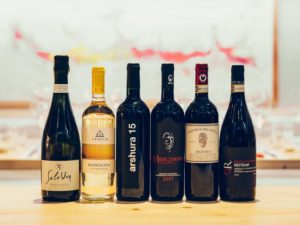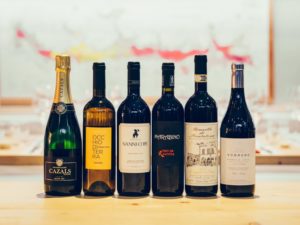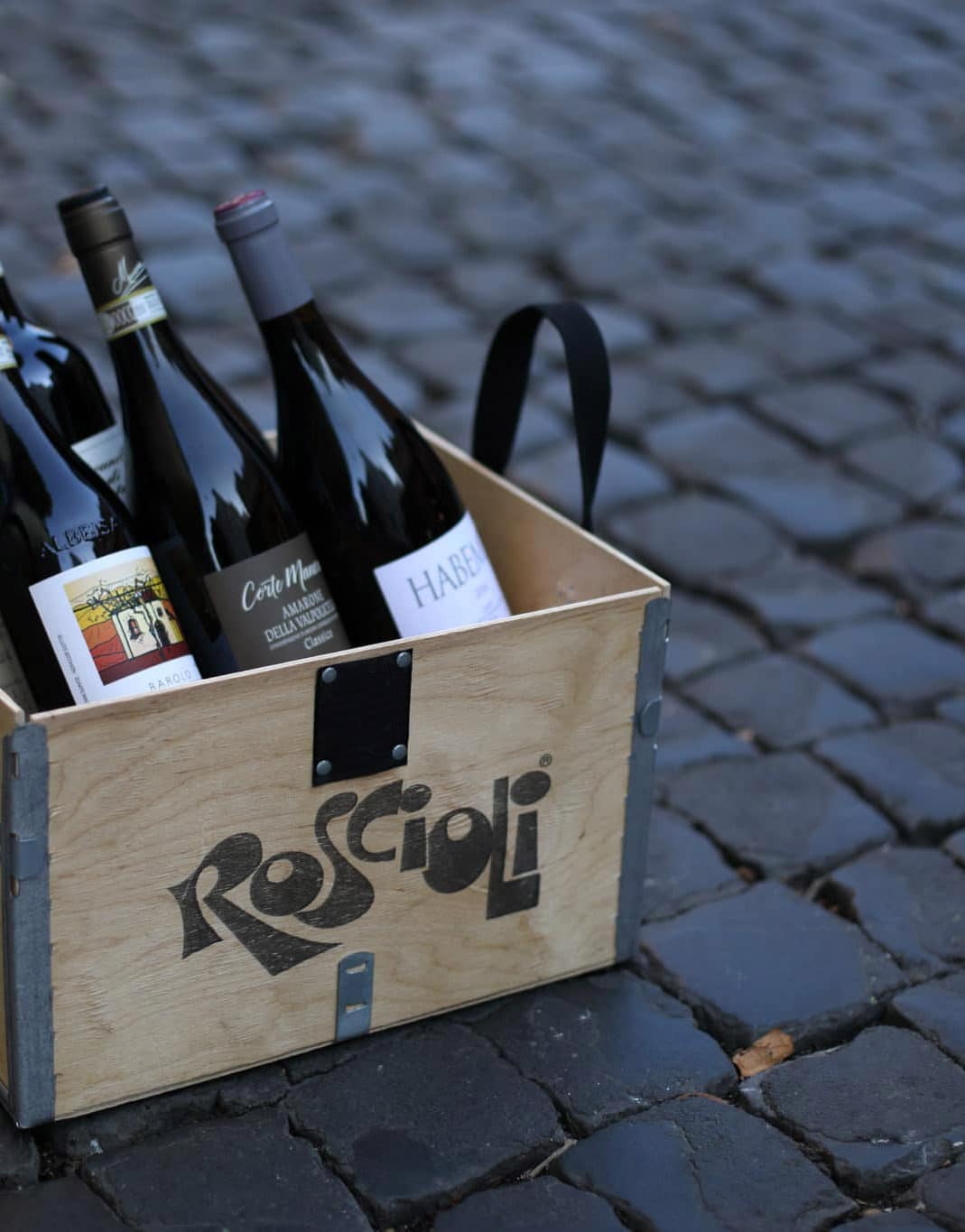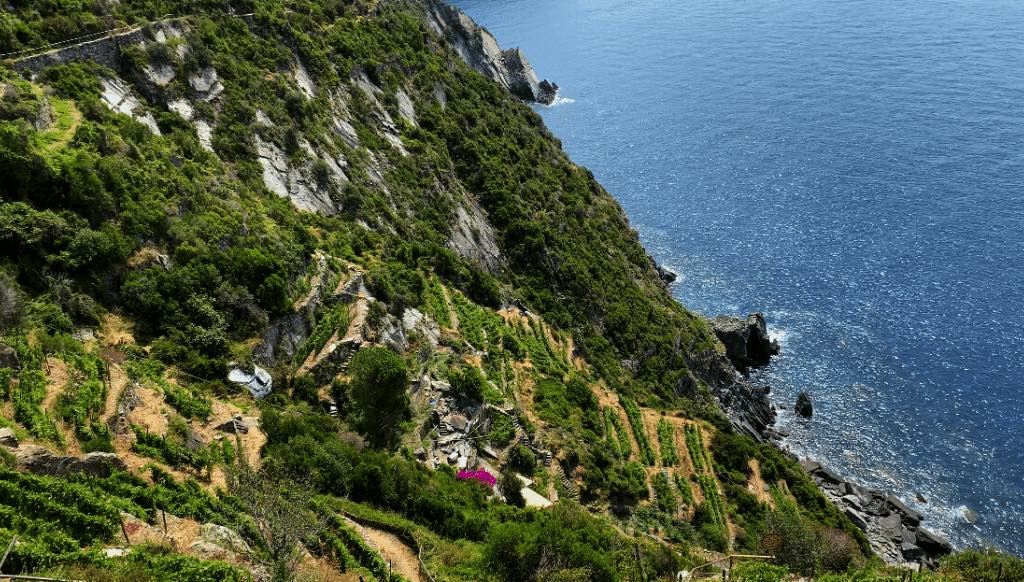
Thus the feeling is often that of arriving in a place that is not a place, where the key word is often recovery or return.
Some of these new farmers try to tell you that they have always been here, it is the world that has changed. Others, like Possa, openly state that here they went back, after everyone had left.
In fact, this is a contradiction. One of the most touristic places in Italy is in fact almost abandoned. Small historic centers are frozen in a past that perhaps never existed, tours are organized on all types of means of transport and all homes are expropriated, transforming them into more or less expensive shelters and dormitories.
So it is. An abstract and premeditated place like Venice and Florence or the center of Rome (the latter perhaps saved from its being ontologically dysfunctional) and what remains are abandoned landscapes and luckily, sometimes, people.
So it is not neo-rural rhetoric to say that those who work the land now, even if only for tourist purposes (Cinque Terre tour, bathroom, lunch and winery visit included), are in fact saving a territory.
Because it takes courage to go back to work here. For centuries wine has been made under extreme conditions in these parts. Terraces that are real fortifications, in an attempt to steal a few meters of arable land, harvesting done by boat, places where mechanization has not been able to and never will arrive. This also seems like the story telling of a glossy brochure, but it's true.
Possa tells himself that here everything is difficult and extreme. He explains how he is trying to recreate a garden of biodiversity made up of 120 types of citrus plants, 19 native vines, 230 types of aromatic plants, stone by stone and meter by meter of terraces overlooking the sea. A tiny but nevertheless patchy property. The plants are not all local. There is the Australian mandarin and the pink pepper from the Philippines. 80 years ago there were 1200 hectares of vineyards, now there are only 120. Possa does not say this with regret, but as a simple fact. However, the risk is that of soil erosion. With no more terracing, the rock falls down, the landscape falls apart. Possa does not say this, or rather he is about to mention it when a boulder weighing a few tens of kg comes down from the opposite side (fortunately not ours). He seems almost excited, with a special effect of the place included in the tour. So for once, it seems that the story comes from the landscape and not vice versa.
Then, Possa explains in broken English about the vineyard, its history, its territory, how some Milanese people left their company to come here to rebuild dry stone walls, how many wives (few husbands) of local winemakers are now American and Canadians, in search of their 'Liguria Sun'.
Every 2 meters there is a new detail to discover, something to smell.
'This is licriso', says Possa. A native aromatic plant. 'Keep in mind this scent, a kind of wild licorice'.
'This year, with the heavy rain in February we had to rebuild 13 of the 17 dry stone walls we have. In one year 13 out of 17 were destroyed. You understand that it was enough for a generation to go elsewhere, to the factory in the city.'
A speech heard a thousand times from Calabria to Valtellina or the Apennine, with mountainous parts of Italy abandoned and now partially rediscovered. The reasons are always the same; the charm of the easy city life, the gain, the loss of competitiveness towards industrial products (in this case wines).
Then we go to the cellar, in Riomaggiore. A small room recovered from an old cellar of 1300. A few square meters, with many photos of the 10-year-old son who harvests and crushes grapes. Every year they organize harvests for the children, each one adopts 2-3 plants and takes care of them. Then some immigrants who came from the sea and tried to be integrated into the project. All explained by Possa without rhetoric, done because that's how it comes and it seems right to do.

When we make these visits, from Tavernello to the small artisans of Calabria, the aim is always the same; we try to let the territory speak for itself. But this does not always succeed. Often, in fact, the landscape is the child of the story.
But it happens that sometimes the story is the landscape. And here, when tasting Sciacchetrà, one of the most talked about and least drunk wines in the world, one unequivocally finds, among the thousands of aromas, the unique flavor of Licrisio. At that point the landscape becomes a sensorial experience and one forgets that in the side streets there are hordes of tourists desperate for an authenticity that they will never find.
I think Possa, even if he doesn't show it, is happy to see the moved expressions of the two Americans. There's no space for an 'amazing' or a 'wonderful', only contemplative silence. Whether sacred or profane, traditional or neo-rural, true or false, it doesn't matter.
It is a pattern that is often repeated, we said at the beginning. Everything is a story that has already been heard, a tour already taken by someone else. But that taste, after that sensory walk in Possa's vineyard, that is not. That is unique, personal and unrepeatable.
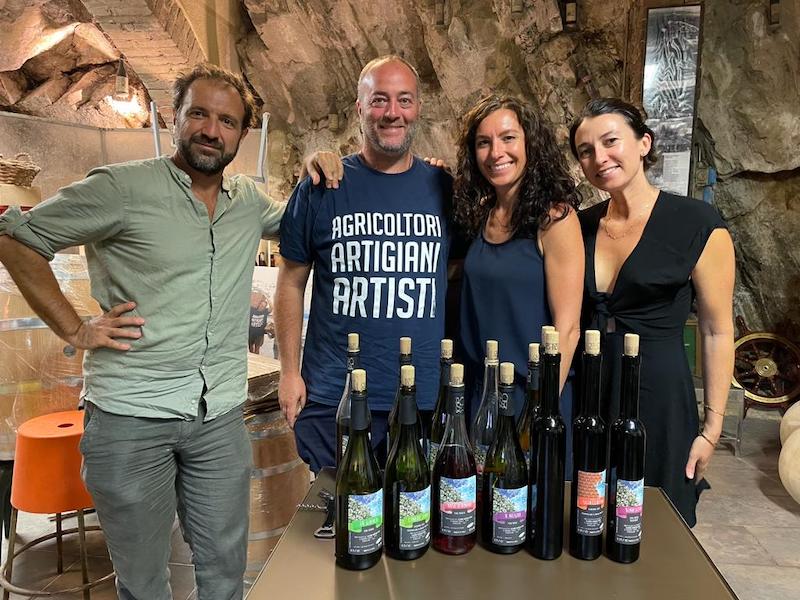
Lindsay's Response
Yes, I'm American, in the best and the worst of the sense. I travel with an innate sense of naivety in my eyes when I'm outside of my home country and sometimes it takes so little for a place or experience to completely shock me and leave me in awe. But I've discovered that surface value awe is fleeting if not reinforced by something more, something which can stir up an emotion which will help to imprint the memory, and reverence for what gives rise to that beauty.
In the US, we worship and thank Nature for giving rise to such majestic places - the Grand Canyon, Yellowstone, Big Sur. We're naturally blessed with beauty which takes our breath away and we have no one that we need to thank for it. In Italy, the story twists. It becomes deeply human. The most moving and emotionally revealing places were most often constructed by Man - the terraced cliffs of the Cinque Terre, the Colsseum, Venice - to name a few. And here we are on the vertiginous slopes of Riomaggiore, where one man with the help of just a few hands, his son and a couple of immigrants, have helped to terrace a land which would otherwise crumble away, rock by rock.
So yes, we take beauty for granted and often let it stop there. Sometimes it literally takes a rock slide, with part of the distant cliff catapulting into the sea, to wake up to the idea that there's something going on at a deeper level than the idyllic scene embossed on a postcard or plastered on social media.
Aesthetic appreciation doesn't happen overnight - it's an evolving puzzle put together over a lifetime. One week prior to our visit to Possa's vineyard, my American friend was alone, living her 'Eat, Pray, Love' story in the Cinque Terre, a perspective that lacked any cultural sense of the beauty she was seeing. She asked Possa why this region went from 1200 hectares of vines to 120 over the last 70 years, but was troubled by the fact that after 20 minutes, her question wasn't answered. This shows a sincere care that you just don't find in the bestselling books about Italy.
On paper Possa's story could sound similar to many other heroic struggles of artisan winemakers - one man making sincere effort to recover land which had become too grueling to cultivate, where patience and hard work has been replaced by machines and efficiencies, to maintain tradition, to restore the glory of a past time, working with maximum respect for the land, biodynamically and organically. It's a story we hear often in vineyards, and one that finds its way onto the back labels of bottles or into blog posts. But one that without the actual personal experience attached to it, can easily be chalked up as just another artisan winemaker who is doing what modern day requires of him in order to appeal to a particular segment of wine enthusiasts.
Possa's story has a little extra oomph due to the fact that they have created an ecosystem which you simply don't hear about everyday. 19 indigenous grape varietals, 120 different varieties of citrus plants, 230 aromatic herbs, 8 different varieties of strawberries, just 8 types of tomatoes this year he laments - and all of this on a small amount of complicated, vertical hectares, farmed completely by hand, with nothing more than a monorail system (which of course is broken the day we are there) to assist. Harvesting happens on boats, with the grapes arriving in a recovered cellar dating to the 13th century. Vines in the distance are around 100 years old, with the newer vines about 15 years old, from when the vineyard was restored in 2004. If this doesn't leave you speechless, you should go get your pulse checked immediately.

In the US, this would be an extreme story of heroic farming, as most of our vineyards are cultivated on easy-to-farm valley floors, since it's illegal to plant on slopes - a bizarre law created to supposedly protect the land from erosion. Yet here in Italy, you clearly see that having worked the land with vines and terraces, this has actually saved the land, as well as giving a sense of meaning to the land. This makes me want to delve deeper into the stories of my own land back home. The dialog needs to go deeper than simply discussing organic and conventional farming.
That doesn't mean all is rainbows and unicorns. Climate change is a daily battle in Cinque Terre, with 13 of 17 constructed walls being destroyed in just one year alone due to heavy winds and rains, with reconstruction happening rock by rock. A program was also initiated where each child in the area adopts 3 plants, and is fully in charge of them. The idea is to encourage participation, setting up a generational continuity of viticulture - although it's unclear it will actually happen amidst the lack of patience among younger generations. I'm immediately stupefied by the idea that everyday you plant and sow the seeds for the future with the lingering question - will all this blood, sweat and tears be lost as it was in the 50s? Will there still be vineyards visible in the backdrops of postcards sold at the tourist shops below, or will Possa's future dreams for his child crumble like the cliff inevitably does? This contradictory land is truly a utopian battlefield, and I say that wiping sweat off my forehead, with a lack of breath from a single trip down and up in the vineyard with empty hands.

But if I have to be honest, reading these stories seems like another drop in the bucket. We can keep reading stories, or we can get out and live these stories, sealing the experience into our emotive memory. The only way to be left utterly speechless, trying (and failing) to find the appropriate words in an effort to confer our reverence for what they are doing to try to make a difference in a world being overrun by machines, computers and mono-culture, is to make a personal visit and experience the territory under your feet and nose, imprinting it in your olfactory memory bank forever. Hearing there are 230 aromatic herbs may certainly be moving, but it's something entirely different to experience each one of their intoxicating perfumes. Inhaling as the multitudes of lavender brush your shoulder, picking a leaf of an incense plant, or discovering the white licorice which has an uncanny resemblance to fresh maple syrup, and finally sampling the Sciacchetrà in the ancient cellar.
Most people will grapple with the $100 cost of a half-bottle of Sciacchetrà perched on the wine shelves of Liguria. I'm sure this was the most expensive taste of wine that my friend had tasted in her life. But I'm pretty certain this will turn out to be one of her most priceless memories of her Eat Pray Love trip, standing out amongst the infinite beauty that us Americans just can't help ourselves from coming to witness in this colossal country, which we can only digest sip by sip, bite by bite, layer by layer. So yes, this experience was just that - absolutely amazing and breathtaking.
These are the stories that have deeply linked me with my passion for Italy. And these are the wines and the stories which we include in the Roscioli Italian Wine Club.
How to Host the Perfect Italian Dinner Party
Bring Italy to you with our free guide to planning and hosting the perfect Italian dinner party!
Find recipes, wine paring recommendations and other tips for a memorable evening, all curated by our team of experts - download today here:
 SEI IN ITALIA? CLICCA QUI
SEI IN ITALIA? CLICCA QUI 

